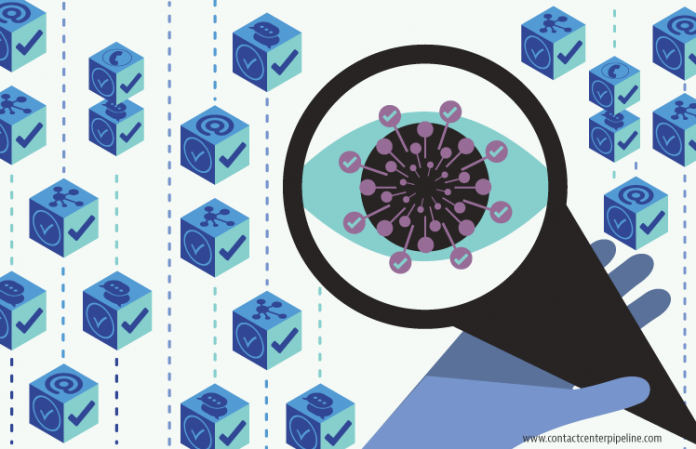
Customers expect choices when they need to reach out for service or support. They want to interact with brands via their preferred channel, be it voice, text, chat, social media or email.
Companies generally are doing their best to accommodate customers’ access demands by adding more digital channels to their lineup. However, in the rush to open new channels of communication, too many are skipping over critical steps that are necessary to ensure that the overall customer experience is efficient, holistic and consistent.
Veteran customer care and contact center leaders understand that making a new channel available but providing a poor service experience to those who use it is much more harmful than not offering the channel at all. Further, most consumers would gladly trade the minor inconvenience of using a second-choice channel if it delivers a high-quality experience and resolves their issue.
Then why are so many companies plunging pell-mell into digital channels seemingly without concern for the impact on the customer experience? It often comes down to a verdict handed down by a senior decision-maker or pressure from stakeholders, according to more than half (54%) of customer experience leaders participating in a recent study (“The Danger of Digital: Why digital self-service without true omnichannel strategies risks the entire customer experience”) released by customer engagement and analytics software provider Calabrio.

President and CEO Tom Goodmanson refers to this as a “jump and how high” reaction versus being thoughtful about planning each step in the customer journey. He points to Calabrio’s earlier research which revealed a mismatch between the number of channels customers want to use and what companies provide. “It appears that companies are applying two to three more channels than the customers want,” he says. “They’re confusing the strategy by having too many channels, and not necessarily evaluating what those options should be given what their customer base is asking for.”
The buzz surrounding exciting new technology makes it easy for companies to succumb to FOMO (fear of missing out, aka, if everyone else is doing it, we should, too). In addition, the speed with which digital channels can be deployed often creates a misconception that managing them will be a simple process. Yet rolling out new channels independently will create misdirection and roadblocks in the customer journey unless you take the time to develop a holistic strategic plan that ties them all together.
Channel Options: More Is Not Necessarily Better
You can’t be all things to all people, as the saying goes, and that certainly applies to customer service channel options. Stretching your internal resources too thin to staff many channels typically results in inconsistent performance and removes the focus on those channels that are delivering a superior customer experience, or have the potential to do so.
How do you know whether you have too many channels or which ones are appropriate options for your customer base? First, you want to make sure that there is sufficient demand for each customer channel you provide. Goodmanson recommends tracking adoption and usage rates for each channel to ensure a big-picture view of volume. Comparing transaction completion versus abandonment rates will give you an idea of how each channel is performing.
Then “keep drilling down into customer personas to understand the ages, buying patterns and preferences that are driving to certain channels,” Goodmanson explains. The idea is to coordinate all of the data to provide an overview of which are your best channels and who’s using them.
“Don’t be afraid to get rid of channels if they aren’t performing and your customers aren’t embracing them,” he adds. However, if the data shows that there is still some potential, a deeper dive into customer feedback will present insights for how to integrate it into an omnichannel strategy and redeploy it properly.
Monitoring Service Quality Across Channels
Customer expectations are high when it comes to service delivery, but many companies have struggled to ensure uniform quality across channels.

How can you expand your quality program to ensure a consistent customer experience? “Listen to customers’ feedback and monitor interactions,” says Darrin Bird, executive vice president at TCN Inc., which provides cloud-based call center technology for enterprises, contact centers, BPOs and collection agencies worldwide. “Context is everything. Look at the entire call center experience (i.e., call routing, call recordings, call transcripts, customer service provided by the agent, etc.).”
To capture customer feedback by channel, Bird recommends implementing the following tools:
- Speech analytics
- Call recording
- Sentiment analysis
- Text analysis
- Post-call or text surveys
Just as important as collecting customer feedback is how you use it. “Use captured data as a learning tool to improve agents’ skills,” Bird says. “Provide continuous coaching to agents. Look for gaps in skill sets and incentivize agents to train and learn (i.e., add gamification to the training process).” In addition to agents’ skills, “aggregate and analyze your contact center’s data to make changes to processes and procedures that will benefit the organization,” he adds.
Adapt Processes to Reflect an Omnichannel Environment
Hiring and training are two key processes to focus on when reviewing customer interaction data. Contact centers may discover that outdated staffing practices are not reflecting an omnichannel environment, and thus, are contributing to uneven service delivery. The Calabrio study found that, despite an increase in the number of channels offered to customers, only 55% of U.S. companies have changed the way they hire CSRs, and only 44% of U.K. companies have adjusted their hiring practices. The report also points out that companies are “not properly onboarding and training customer service employees to deliver a channel-specific experience. And it’s putting their entire investment at risk.”
“You should be applying QA to everything, whether it be a bot or a human being,” says Goodmanson. “With the use of analytics, there is no reason not to extend QA to analyze 100% of conversations across every channel.”



